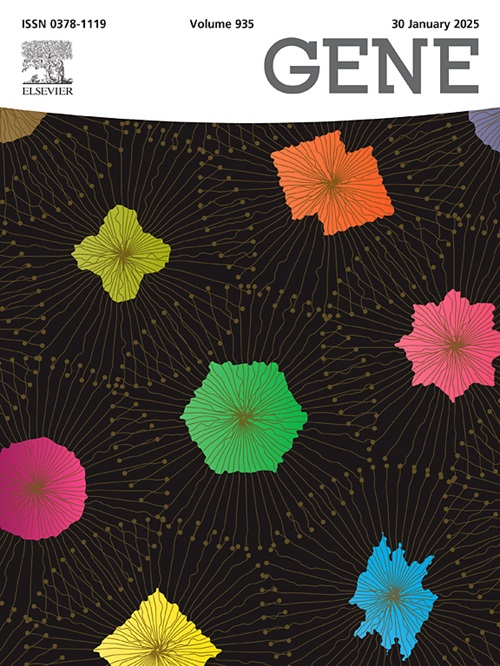Genetic and epigenetic landscape of erectile dysfunction: a comprehensive review
IF 2.4
3区 生物学
Q2 GENETICS & HEREDITY
引用次数: 0
Abstract
Erectile Dysfunction (ED) is a multifactorial condition with significant physical, psychological, and societal impacts, affecting approximately 24.2 % of men in the United States, with prevalence increasing with age. While lifestyle factors and comorbidities such as diabetes and cardiovascular diseases are well-established contributors, emerging evidence highlights the role of genetic predisposition in ED pathogenesis. This review evaluates the genetic architecture of ED, focusing on candidate genes, genome-wide association studies (GWAS), and epigenetic mechanisms, including DNA methylation, histone modifications, and microRNAs. A comprehensive search strategy was employed, targeting peer-reviewed articles published between 2000 and 2024 from databases such as PubMed, Google Scholar, Scopus, and Web of Science. Keywords included “erectile dysfunction,” “genetic profiling,” “epigenetics,” and “GWAS.” Studies were selected based on relevance, methodological rigor, and contributions to understanding genetic and epigenetic factors in ED. Findings reveal significant associations between ED and polymorphisms in genes such as NOS3, PDE5A, AR, and SHBG, as well as epigenetic modifications influencing endothelial function and hormonal regulation. GWAS have identified loci near SIM1 and other genes linked to vascular health and metabolic pathways. Despite advancements, limitations such as small effect sizes of genetic variants and underrepresentation of diverse populations persist. This review underscores the potential of genetic profiling to enhance early diagnosis, personalized treatment, and preventive strategies, bridging the gap between research and clinical practice in ED management.
勃起功能障碍的遗传和表观遗传景观:全面回顾。
勃起功能障碍(ED)是一种多因素疾病,具有显著的身体、心理和社会影响,影响了美国约24.2%的男性,患病率随着年龄的增长而增加。虽然生活方式因素和合并症,如糖尿病和心血管疾病是公认的因素,但新出现的证据强调了遗传易感性在ED发病机制中的作用。这篇综述评估了ED的遗传结构,重点是候选基因、全基因组关联研究(GWAS)和表观遗传机制,包括DNA甲基化、组蛋白修饰和microRNAs。采用了全面的搜索策略,针对PubMed、b谷歌Scholar、Scopus和Web of Science等数据库中2000年至2024年间发表的同行评议文章。关键词包括“勃起功能障碍”、“基因图谱”、“表观遗传学”和“GWAS”。研究的选择基于相关性、方法的严谨性以及对理解ED的遗传和表观遗传因素的贡献。研究结果显示ED与nos3、PDE5A、AR和shbg等基因多态性以及影响内皮功能和激素调节的表观遗传修饰之间存在显著关联。GWAS已经确定了sim1和其他与血管健康和代谢途径相关的基因位点。尽管取得了进步,但遗传变异的影响较小以及不同人群的代表性不足等局限性仍然存在。这篇综述强调了基因图谱在增强早期诊断、个性化治疗和预防策略方面的潜力,弥合了ED管理研究与临床实践之间的差距。
本文章由计算机程序翻译,如有差异,请以英文原文为准。
求助全文
约1分钟内获得全文
求助全文
来源期刊

Gene
生物-遗传学
CiteScore
6.10
自引率
2.90%
发文量
718
审稿时长
42 days
期刊介绍:
Gene publishes papers that focus on the regulation, expression, function and evolution of genes in all biological contexts, including all prokaryotic and eukaryotic organisms, as well as viruses.
 求助内容:
求助内容: 应助结果提醒方式:
应助结果提醒方式:


